| I continued
my Sunday with a walk out Iona's south jetty, with hopes of finding
Lapland Longspurs. It wasn't as windy as other times I had been
there, and so the walk was extra pleasant. The first bird I encountered
on the jetty was an American Pipit, looking a bit different from
the one I had seen by the inner ponds. |
|
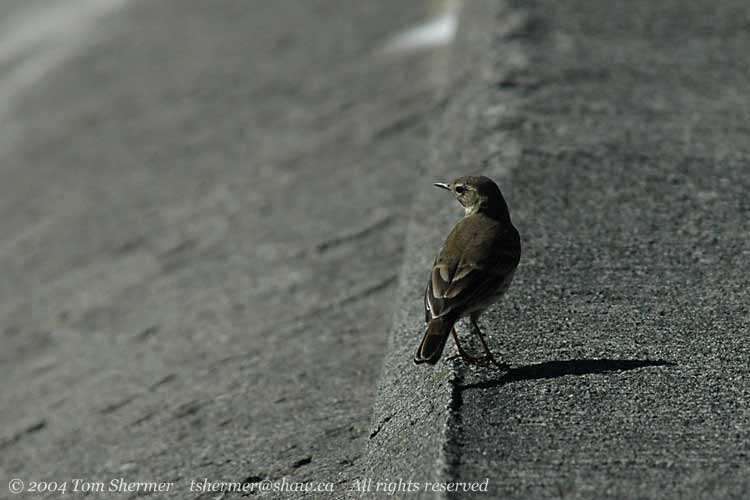 |
| The sun
was well and truly out, giving me some good light. Here I've caught
a little chop bouncing off the breast of a Ring-billed Gull. |
|
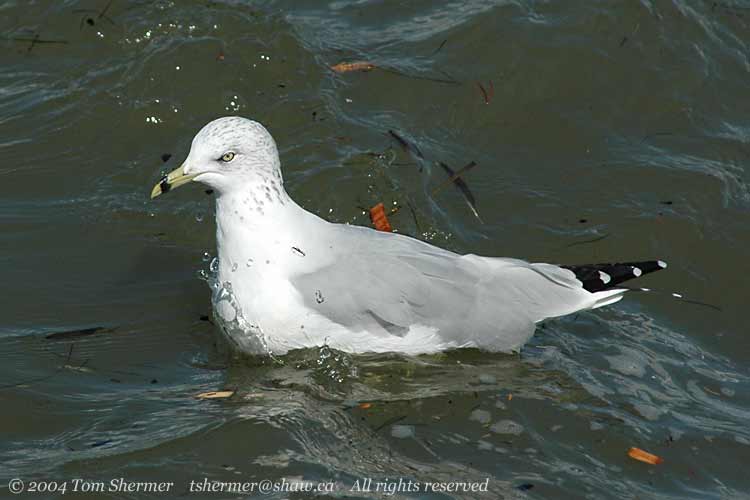 |
| Around the
two-kilometer mark, there were a few female Surf Scoters hanging
out near the jetty. Here's one that got particularly close. There
are three types of scoters that we get out here; one of the best
ways to tell the females apart is by the shape where the feathers
and bill meet. This is clearly a Surf Scoter, as the bill starts
rather squarely, with feathers above it for a ways. |
|
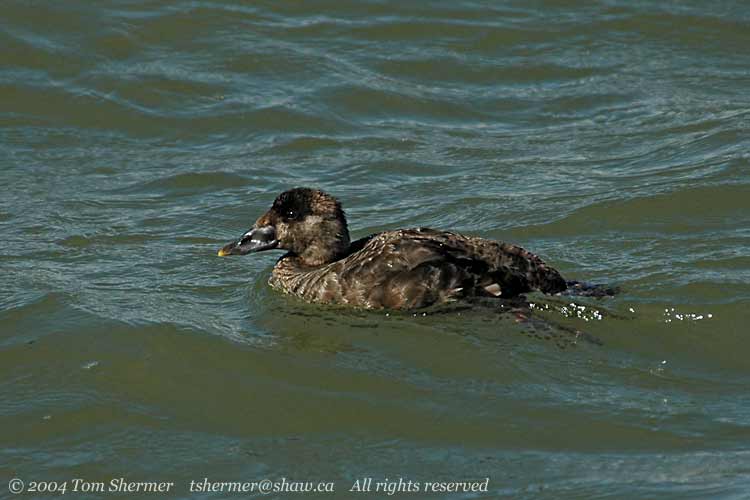 |
|
Some other folks reported
Black Scoters out there that day, but none got close enough to
me for me to make a positive identification. The third type of
scoter we get is the White-winged Scoter. All three scoters tend
to hang out together in mixed flocks. I can understand that--they
seem to be pleasant company and they're awful good-lookin' birds.
Just a little bit further,
I found one of the many Savannah Sparrows I had seen that day.
This one was up on the cement pipe, and I caught him as he attempted
the daredevil stunt of flying with his wings closed.
|
|
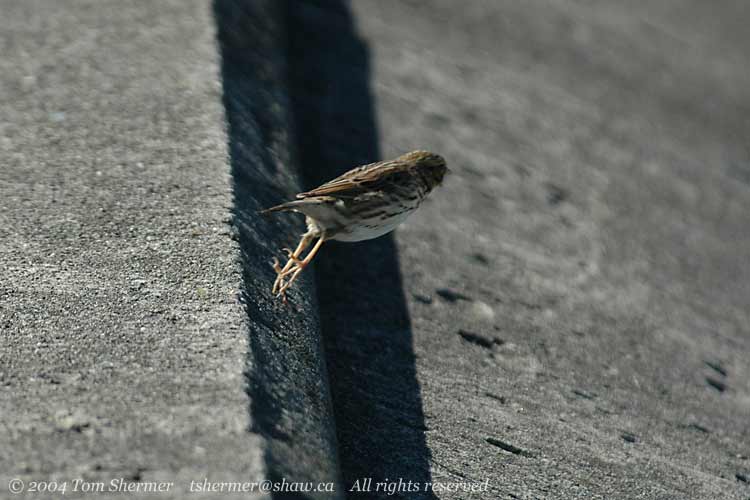 |
|
Don't worry about him,
though. He did eventually come to his senses and flap his wings.
As I reached the tip,
I encountered a couple of birders, Grant and Marcia, who are from
Squamish. They were having a look at the Lapland Longspurs, who,
true to reports, were right there near the end of the jetty. Lapland
Longspurs are a type of sparrow, but they have particularly neat
plumage. Here's one of them.
|
|
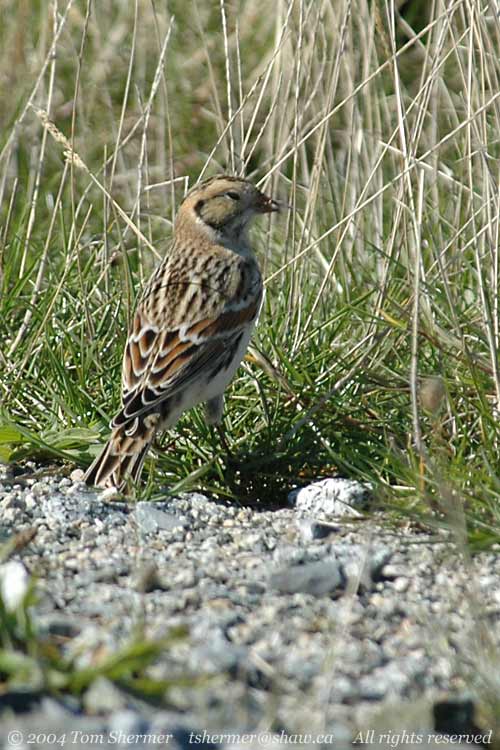 |
| There were
about four of them hopping around. I hadn't met Grant and Marcia
before, and I chatted with them awhile. While we were chatting,
this cormorant flew by. Most of the cormorants out there were Double-crested,
but this one lacked the Double-crested's orange bill. It turns out
that this is a juvenile Pelagic Cormorant. I've seen Pelagics before
at Tsawassen, but I've never gotten as good a flight photo of them
as this. |
|
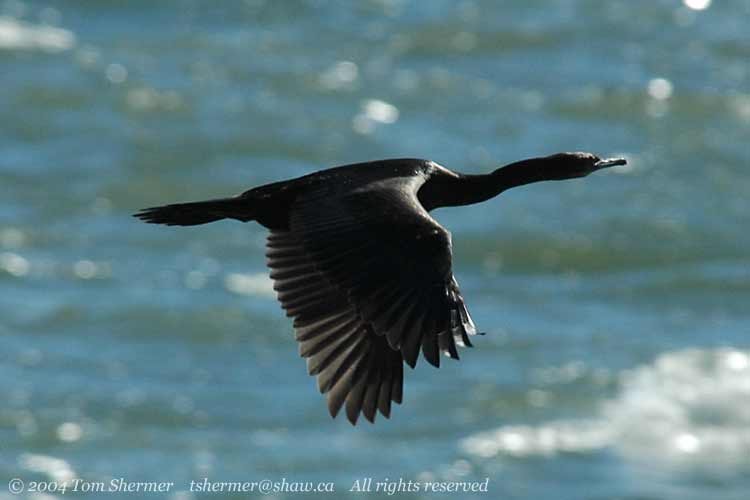 |
| Here's one
of the Double-Crested Cormorants, on the surface of the water. This
photo does a good job of showing their in-water shape, which to
me is (except for the neck and head) similar to a seal. That's a
good thing for the cormorant, as they go diving underwater for their
food. |
|
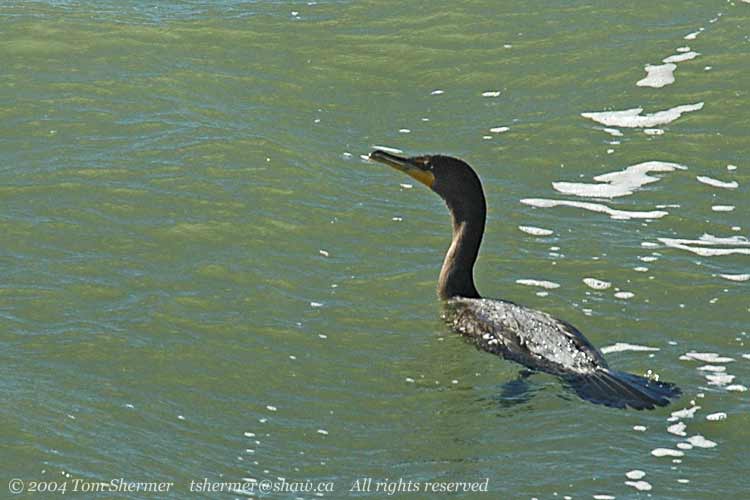 |
|
After the other birders
left, I positioned myself to the side of a wall at the tip of
the jetty. There was a flock of Surf Scoters right off the tip,
and every now and then some scoters would fly in to join the flock.
I sat for about fifteen minutes, taking photos of the scoters
in flight. Here's one showing three male Surf Scoters going by.
|
|
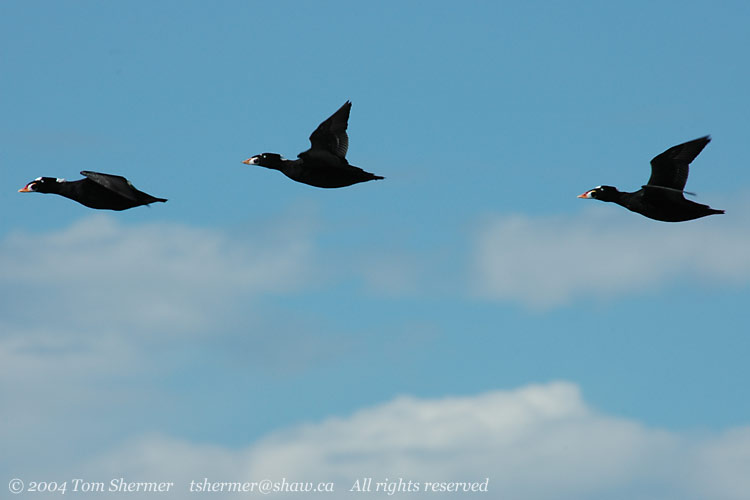 |
|
It wasn't that windy
on most of the jetty, but it was really windy out there at the
end of it where I had been taking photos. I climbed back around
to the leeward side of the end platform. From there, looking directly
back along the jetty towards land, well, you can't really see
the jetty, because there's an interesting structure where the
pipe turns from being horizontal to slanting downwards. There
was a bicyclist resting in the sun on the slanting part, and it
made for an interesting composition.
|
|
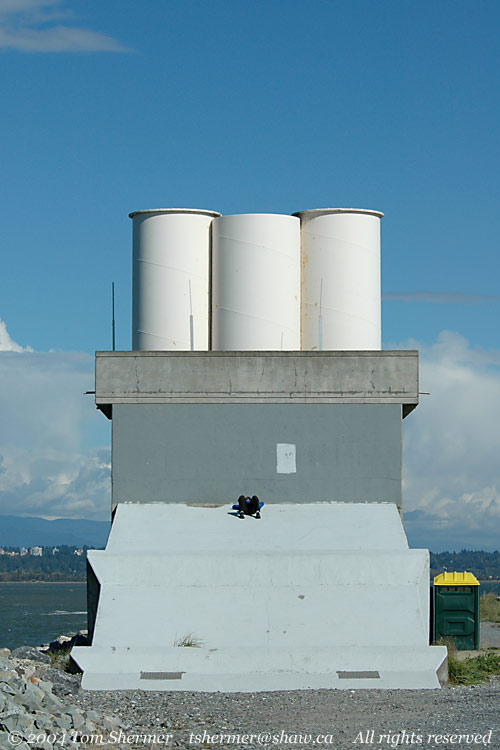 |
|
I don't know what the
three stacks are for.
I took a few more pictures
of the longspurs and headed back towards land. As is usual, the
Double-Crested Cormorants were on top of everything sticking out
of the water.
|
|
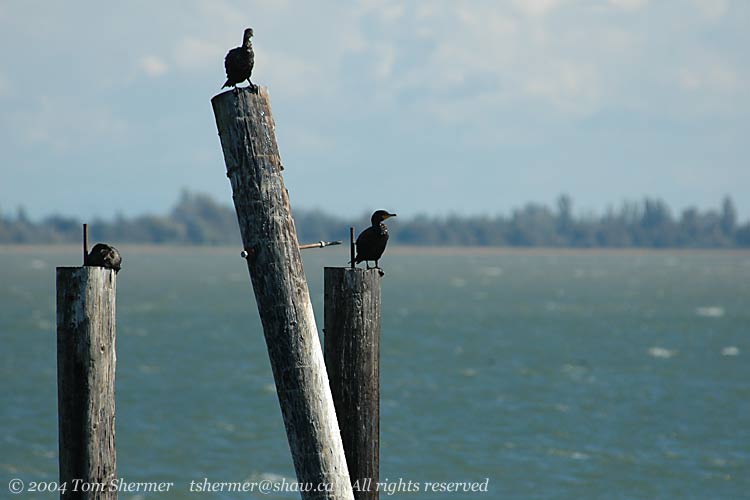 |
|
Surprisingly, on the
south side of the jetty, there was a single male Surf Scoter.
All the other scoters I had seen were on the north side or off
the tip. Here's the handsome devil.
|
|
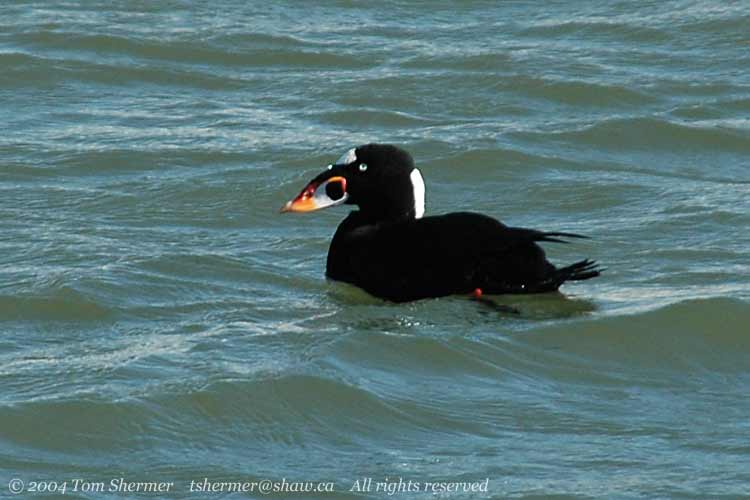 |
|
I love their coloration.
The next couple of
kilometers were without anything notable, although I did find
another Savannah Sparrow who was behaving peculiarly. This one
was half-perched, half-sitting-on-its-rump.
|
|
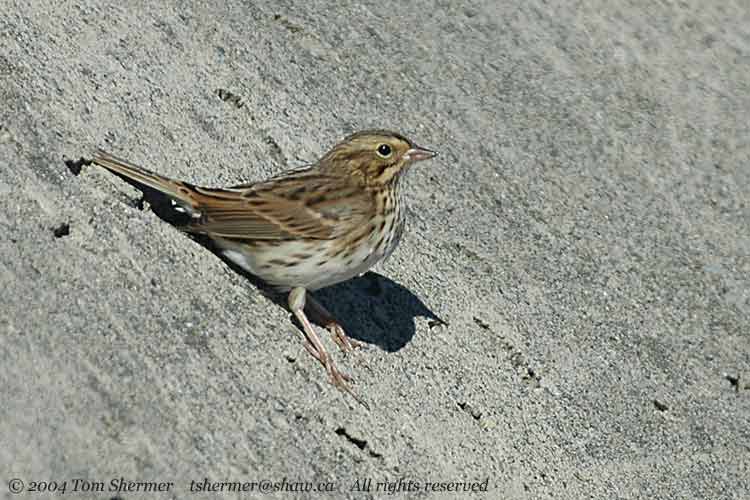 |
|
It just seemed an odd
posture to me.
At about one kilometer
out the jetty, there was a flock of Sanderlings on the pilings
on the south side. I slid down a ways onto the rocks and took
a bunch of photos. Sanderlings are very white, and I actually
like the slightly-overexposed versions of the photos I took, because
it emphasizes their whiteness well. Here's about a third of the
flock.
|
|
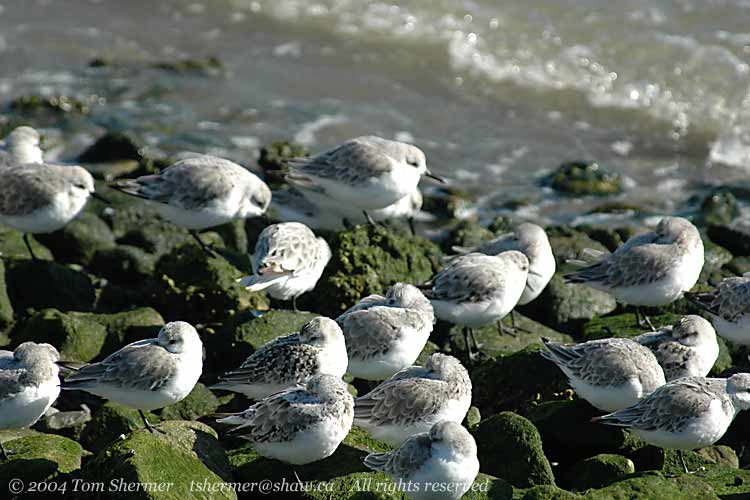 |
|
And here's one guy
who stopped to look at me.
|
|
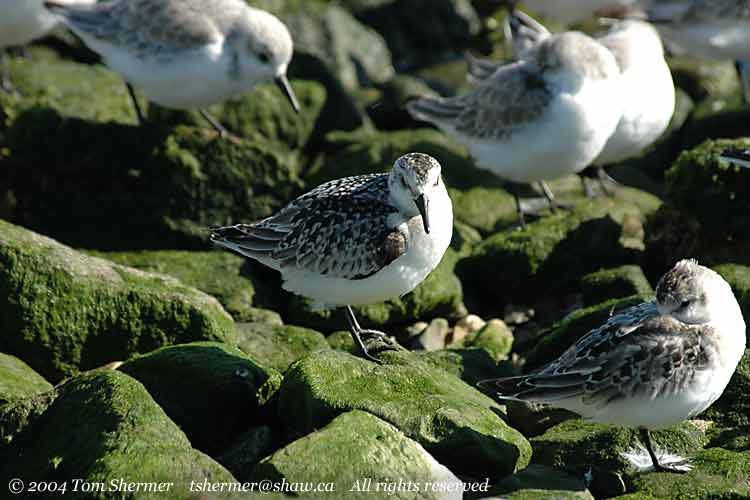 |
|
Right about as I hit
land, I noticed a group of Caspian Terns hunting. Here's one of
the first shots I took of them, showing a tern banking. That's
Vancouver International Airport in the background, with a couple
of well-out-of-focus planes on the taxiway. Iona beach is just
north of the airport.
|
|
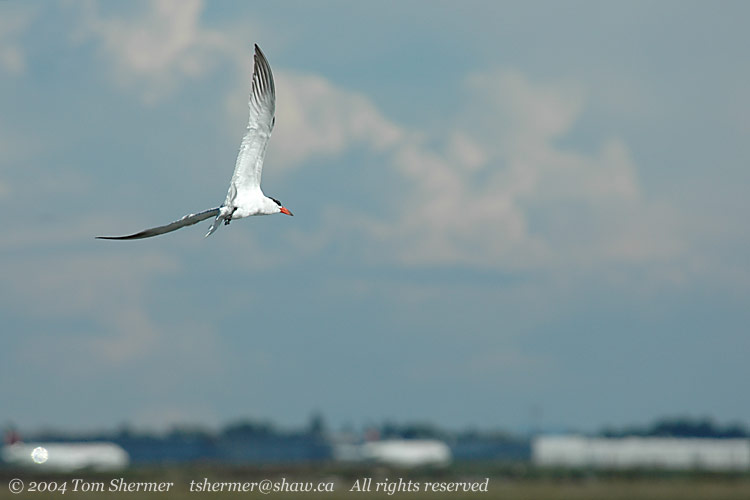 |
|
Here's a hunting sequence.
The terns would do a slow glide over a preferred area in the water,
searching for prey. It was generally the case that three or four
of them were up and searching like this at a time.
|
|
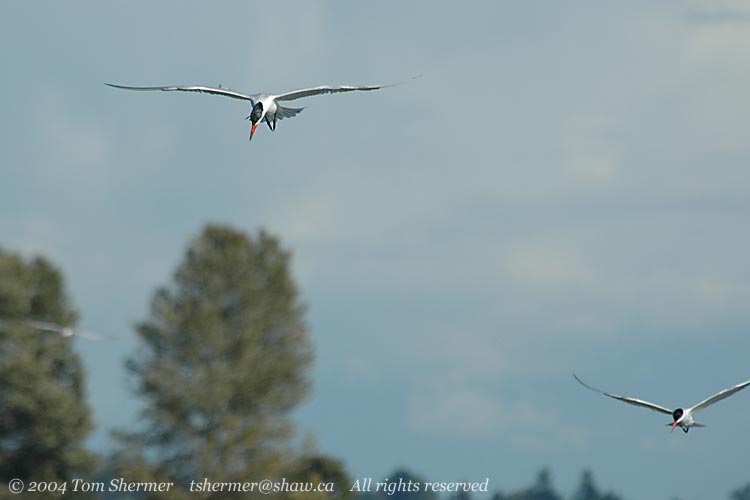 |
|
Upon noticing a fish,
a tern would quickly twist its body and go into a dive straight
down.
|
|
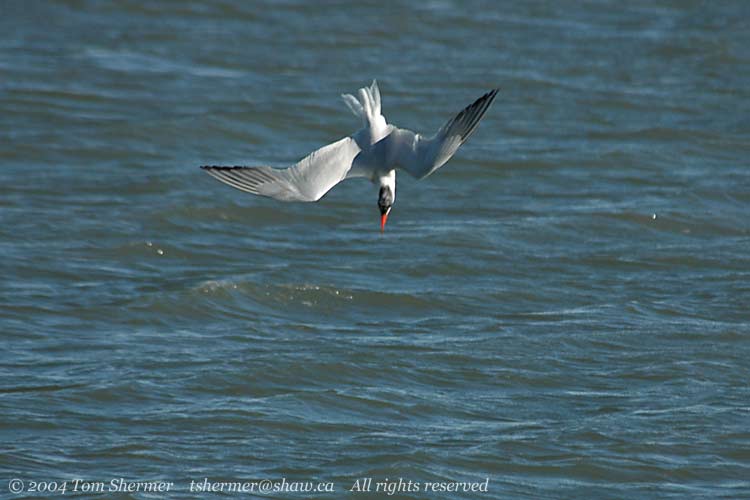 |
|
If the bird lost sight
of the fish, it would pull up. But if not, it kept diving straight
into the water, hitting with a pretty big smack.
|
|
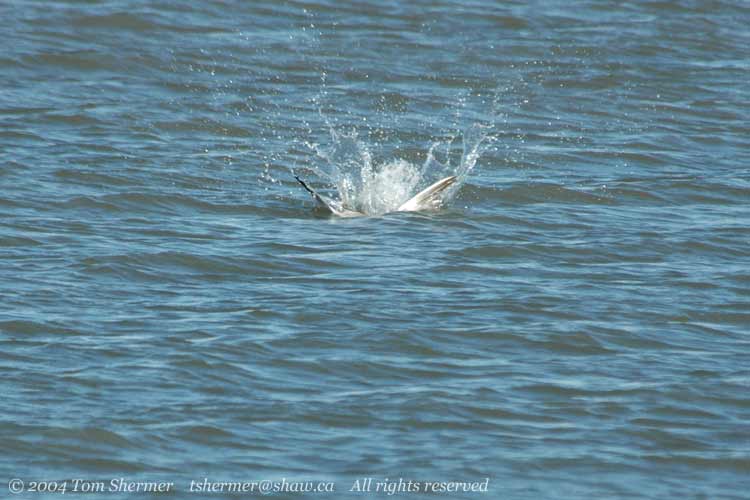 |
| A second
or so later, the tern would emerge. |
|
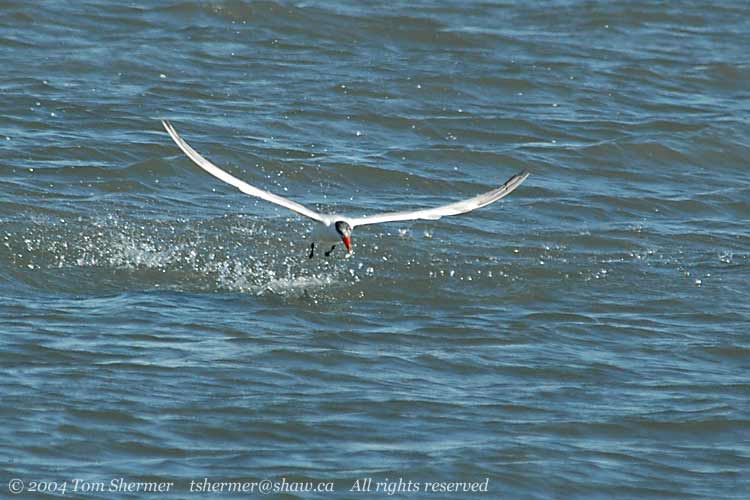 |
| Like this
guy, who was successful, and now holds a fish in his mouth. Once
he caught the fish, he flew back over near the shore where a group
of his fellows were milling around. I presume he consumed his prey
there. |
|
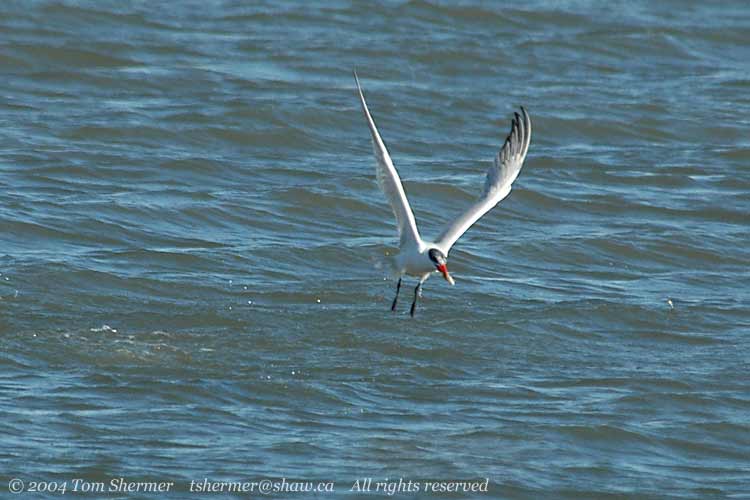 |
|
Anyhow, I'm glad it's
them that do this style of hunting and not me...it looks like
a lot of effort and pain for such a little snack.
As I was back in the
area, I stopped by the inner ponds again to see if the Sharp-tailed
Sandpipers had shown up. They hadn't, but I got this photo of
a Semipalmated Sandpiper, which I hadn't seen earlier in the day.
|
|
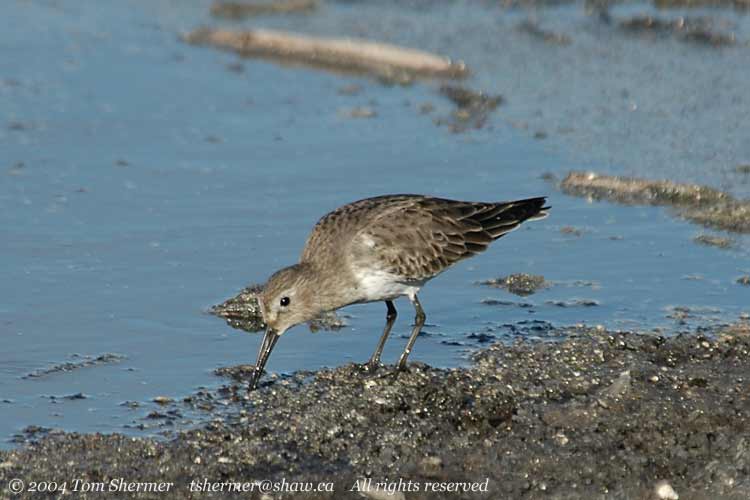 |
| After talking
to a few more birders at the ponds, I decided to head on home. As
usual, I kept my camera at the ready in the passenger seat of my
car, though. It's a good thing I did. About a quarter klick from
the beach, where the road turns east to go along the north side
of the airport, a Northern Harrier crossed the road in front of
me. I stopped my car, grabbed my camera, powered down the window,
and started taking photos. The red/brown of the harrier made a good
constrast with the blue of the sky. Here's one of the photos, showing
him gliding over a field. |
|
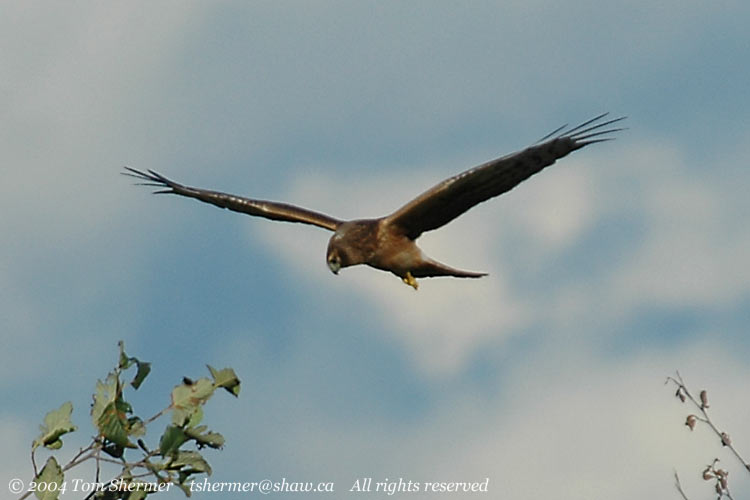 |
| And here's
another, where he's twisted and lifted his wings to catch the breeze
and turn around. |
|
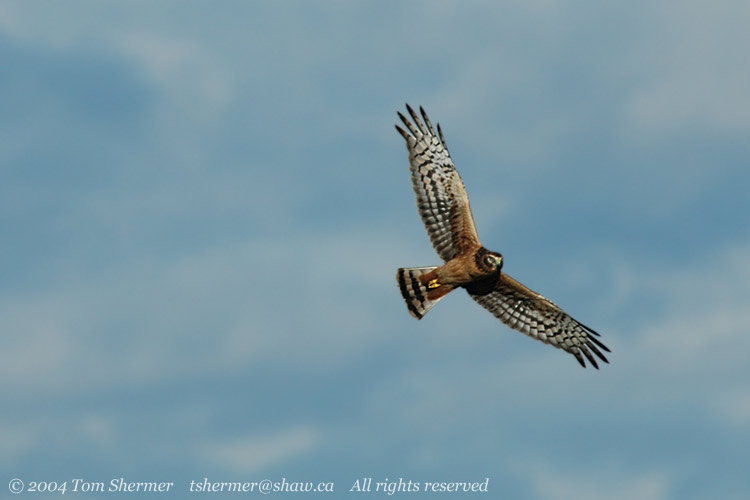 |
|
The harrier was a great
way to end a long photographic day.
Camera in hand,
Tom
|
|